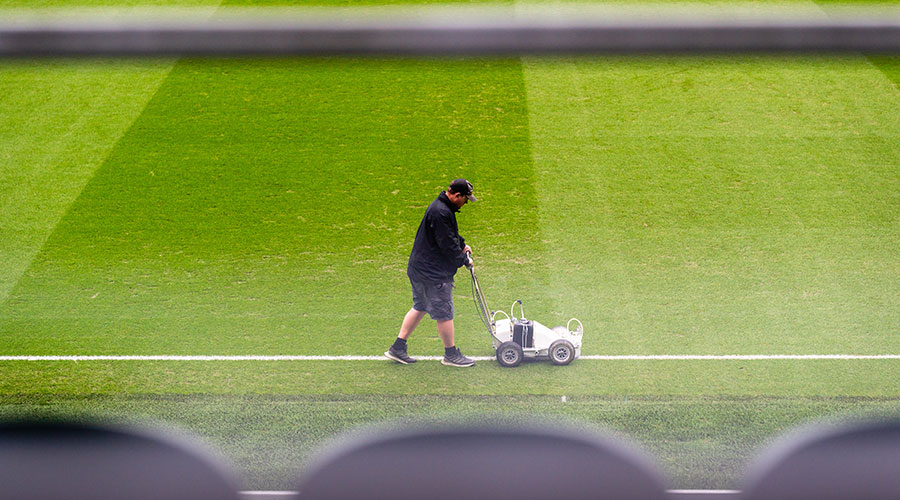 Grounds managers must view nearly every decision — from landscape design to irrigation and maintenance — with a clear focus on the way it will impact the environment.
Grounds managers must view nearly every decision — from landscape design to irrigation and maintenance — with a clear focus on the way it will impact the environment. Strategies and Tactics for Sustainable Grounds
Key sustainability considerations can enable managers to improve the performance and appearance of landscapes
Questions of sustainability have affected nearly every aspect of engineering and maintenance in commercial and institutional facilities. While the impact might be facilitywide, it might be the greatest on grounds management. Grounds managers now must view nearly every decision — from landscape design considerations to the equipment used to maintain the grounds — with a clear focus on the way it will impact the environment.
What is grounds sustainability? While answers to this question tend to focus on the use of fertilizers and other chemicals, grounds sustainability goes far beyond this issue to include plant selection, irrigation system design and use, snow and ice management, and equipment selection. A grounds sustainability program examines the whole picture and sets a course of action that meets the needs of the application in a socially and environmentally responsible manner. The challenge for managers is to modify their existing practices to ones that promote environmental stewardship without sacrificing economic and aesthetic performance.
Finance focus
The widespread belief is that if a program or process is sustainable, it will save money. For example, sustainable practices such as reducing the use of irrigation, fertilizers, and pesticides reduces operating costs. But not all elements of a sustainability program produce immediate savings. Some require managers to make investments that, while producing social and economic returns, might not produce easily measurable financial returns.
Past practices of implementing quick-and-dirty fixes to grounds maintenance issues no longer work. Crews must take the time to understand the cause of a problem and determine the best long-term, sustainable solution is. In turn, this means workers need a higher level of skills, increasing labor costs.
While a sustainability program affects the entire grounds management effort, it will have the most beneficial impact in five major areas: landscape design, handling landscape waste, managing irrigation systems, selecting maintenance equipment, and managing snow and ice.
Design decisions
Grounds sustainability starts with a landscape design that meets the needs of a facility’s occupants, is attractive, can be maintained economically, and is sustainable. To accomplish this, managers need to be involved from the beginning. Planning and placement of landscape and hardscape items is essential when it comes to sustainability, so they must review all aspects of the design with a critical eye for sustainability.
For example, exotic plants tend to create maintenance headaches, so using native grass blends instead of turf grass reduces the need for watering, as does selecting native and drought-tolerant plants. Most landscapes are overplanted, so managers can review designs with an eye toward long-term maintenance costs. Managers with questions about plant and grass selection can consult with a local landscape professional. Using the most appropriate plants and grass reduces costs related to mowing, trimming, pruning, edging, fertilizing, pest management, and watering.
The placement of plantings also matters. Too close to walkways and roads might result in damage to plants from pedestrian and vehicular traffic, and in areas where snow is common, plants must be placed to allow for snow removal without being damaged.
Managers should not limit sustainable landscapes to the ground level. Green roofs offer several benefits that help promote sustainability. The vegetation and supporting medium installed on building roofs can reduce heat loss and gain through the roof due to their insulating properties and evaporative cooling effects, and green roofs serve to reduce and slow down water runoff from a facility.
Related Topics:














